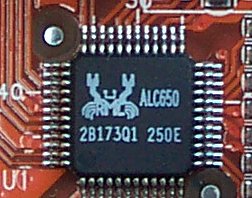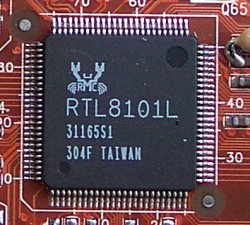Layout and features

The motherboard's PCB is much like Marmite. You'll either love it or hate it. The dark orange is an acquired taste. The BH7 resides on a relatively small PCB measuring 305mm x 225mm, but still manages to leave some of it empty. ABIT have made a couple of interesting changes to the general layout.
Let's not beat about the bush. The BH7 is aimed squarely at those interested in pushing their components to the absolute limit. If you paid close attention to the specifications, the BH7 purportedly supports the upcoming 800FSB Pentium 4 CPUs through the use of a 6:1 FSB-to-PCI divider (as well as a fix option). 200FSB, quad-pumped, is an impressive claim for an i845PE motherboard, so how are ABIT able to guarantee that ?. Using a 4-phase PWM (Pulse Width Modulation) controller is a start. This allows for less voltage fluctuation than the standard 3-phase controllers used on some motherboards, naturally.

As usual, the CPU retention bracket is littered with capacitors. The BH7 uses a bank of Rubycon MBZ 3300uF capacitors for better voltage regulation, again - a must when we have a possible 3GHz+ of pure clock speed to look after. Maybe the BH7 is a test case for ABIT's upcoming official 200FSB motherboards. It does appear that way.
Strangely, the Northbridge is cooled by just a passive heatsink. I'd have thought active cooling would have been in order for 200FSB+ operation. ABIT don't seem to think it's necessary. We'll put this to the test later. I don't like the location of the 4-pin 12v P4 connector. It represents problems for those with shorter 4-pin leads. I'd much prefer it in the top-left of the board.
A single fan header sits between the retention bracket and 3 DDR slots. Thankfully, you can still install and remove system memory, even if a larger graphics card is placed in the 4x AGP slot. Some may view the lack of 8x AGP specification on the i845PE as a lost feature, but testing has shown minimal differences between the 4x and 8x AGP. The only jumper on this board is the standard clear CMOS. The jumper adheres to ABIT's latest design by having an easy-to-pull plastic head. No more intricate finger work.

A notable departure for ABIT are the rotated IDE ports. I kind of like them as it makes installing IDE cables that little bit easier. I also think it gives the motherboard a cleaner look once the cables are installed. Both ports are clearly marked out. Behind them you can just about see a S-ATA port on offer. Powered by the Marvell 88i8030 controller, you can only use a single drive on it, either a natural S-ATA or a P-ATA via a Serrilel connector (not provided). To further dampen matters, the use of the S-ATA port precludes the use of the second channel on IDE port 2. There is no RAID function on this performance-based motherboard. Intel's trusty ICH4 Southbridge provides 6 USB2.0 ports, ATA100, and LAN support. Soon to be replaced by the more powerful ICH5 SB, this will be one of its last outings.


A couple of PHYs here. The ALC650 CODEC provides 6-channel sound. ABIT go a step further than most by providing optical (TOSLink) S/PDIF In and Out ports on the backplane. Perfect for those of you who can make use of the digital transfer connection.

Enthusiasts will be further pleased with the inclusion of the RTM360-110R clock generator. Easy FSB manipulation within an Windows environment is a bonus.

The BH7 seems like a strange animal. On the one hand it's a fully-fledged enthusiasts' motherboard, but it also seems to cater for the audiophiles out there with 6-channel sound support, as well as optical inputs and outputs. A strange but nice combination. 4 USB2.0 ports are always welcome on the backplane, as is 10/100 LAN.









